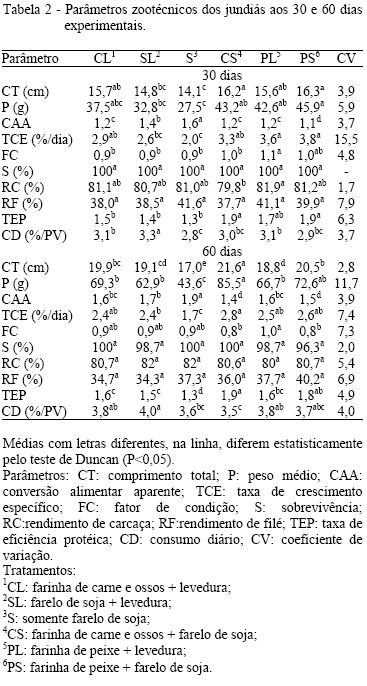This study aimed at verifing the growth and fillet composition of jundiá juveniles (Rhamdia quelen) fed with different protein sources, for 60 days. It was used 540 fish (initial weight=15.00±0.62g, initial length=11.98±0.35cm) at random distributed in 18 tanks of 280L (30 fish/tank) in a water re-use system. 6 treatments were tested (with 3 repetitions): CL (meat and bone meal + yeast), SL (soybean meal + yeast), S (only soybean meal), CS (meat and bone meal + soybean meal), PL (fish meal + yeast) and PS (fish meal + soybean meal). They were dear development parameters (weight, total length, condition factor, specific growth rate, protein efficiency ratio) to the 30 and 60 days, centesimal composition and protein and fat deposition in the filets at the end of the experiment. The parameters weight, total length and specific growth rate were higher in the treatments composed by the combination of the feedstufs of animal origin (meat and bone and fish meal) with soybean meal. The fat and protein deposited in the filet of the fish was also higher in these treatments (CS and PS). The carcass and filet yeld didn’t differ among the treatments. This concluded that the combination of meat, and bone, and fish meal with soybean meal make good growth and higher protein and fat deposition in the filets of jundiá juveniles.
jundiá; growth; protein sources; fillet; Rhamdia quelen



